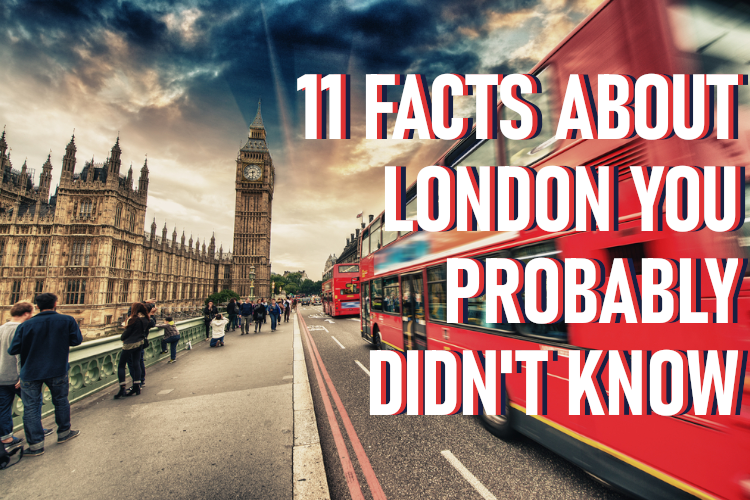
From Big Ben to Buckingham Palace, the Thames to Trafalgar Square – few cities feel as familiar as London, the capital and largest city of both England and the United Kingdom.
As a global city and one of the largest financial centres in the world, London exerts a massive degree of influence internationally on basically every sphere of life: from art to design, commerce to entertainment, fashion to finance, education and healthcare to tourism and transportation.
Yet, despite its fame and familiarity, there are many aspects of London that not too many people know of – some facts even hidden on purpose.
Let’s take a look at 11 facts about London that you probably didn’t know.
1. Big Ben is not what you think it is

To most people, Big Ben is that famous clock tower at the north end of the Palace of Westminster. However, Big Ben is actually the nickname for the Great Bell – the largest of the five bells inside the clock, at the top of the tower – and not the tower itself.
The tower used to be called the Clock Tower but has been named Elizabeth Tower since 2012, when it was renamed in honour of Queen Elizabeth II’s diamond jubilee.
2. The Shard is taller than all natural peaks in London
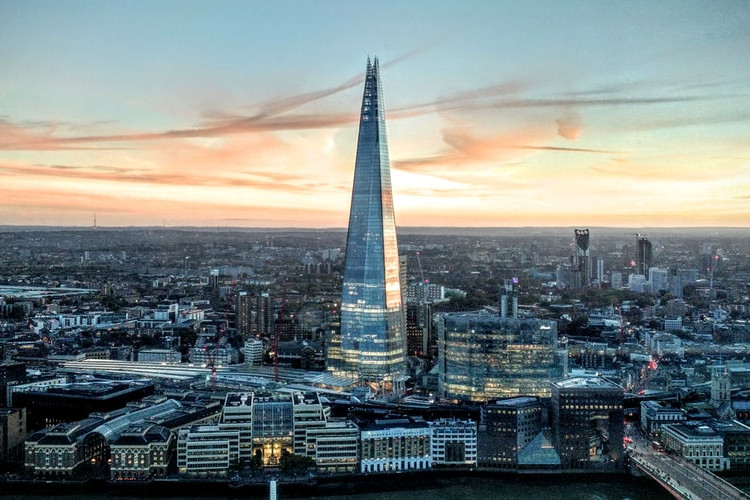
Granted, being taller than peaks in London is easy, but with a total height of 309.6m (1016 ft), The Shard is also taller than any natural point in all of South East England – the highest being Waldbury Hill at 297m (974 ft) above sea level.
Some more interesting factoids you should know: The Shard is covered in 11 000 panes of glass, contains 44 lifts and boasts a total floor space of 11 hectares.
3. London is extremely small yet extremely large
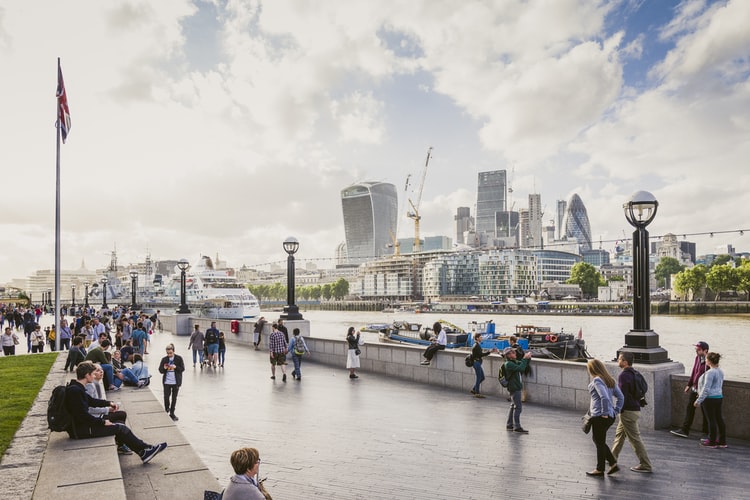
The City of London, known as the Square Mile, is actually a very tiny part of central London, mostly corresponding to the original settlement founded by the Romans in 47 AD: Londinium. It is London’s foremost central business district and is home to many famous landmarks such as St Paul’s Cathedral, the Barbican and the Museum of London. It is also the smallest official city in the entire UK, covering a teeny tiny area of 2.9km2 (1.12 sq mi)!
Okay, so what we know as London today is obviously immensely larger – it is the largest city in England and the entire UK. From an administrative perspective it is actually a metropolis known as Greater London. Greater London is a ceremonial county, further divided into 33 local authority districts – 32 of which are known as boroughs. The City of London, the remaining district, is a ceremonial county on its own (once again the smallest in the UK), surrounded by Greater London.
4. Parts of London have been inhabited since prehistory
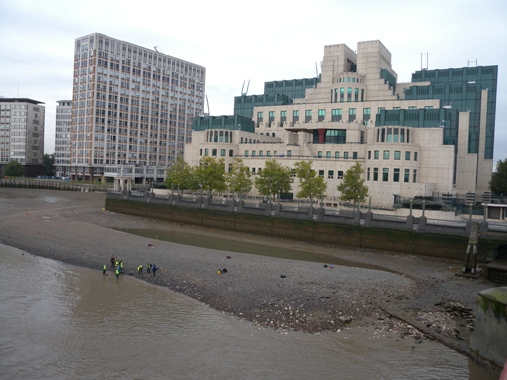
One of the oldest-dated Mesolithic timber structures to have ever been found in the vicinity of London was discovered in 2010, right in the shadow of the MI6 Building in Vauxhall. The timbers dated to between 4800 BC and 4500 BC.
Interestingly there is another set of timber structures located just 600m south of here that date back to the Bronze Age, around 1500 BC. Researchers think the latter may have been a bridge that linked to a gravel island now lost.
5. There are 2 fake houses in Bayswater
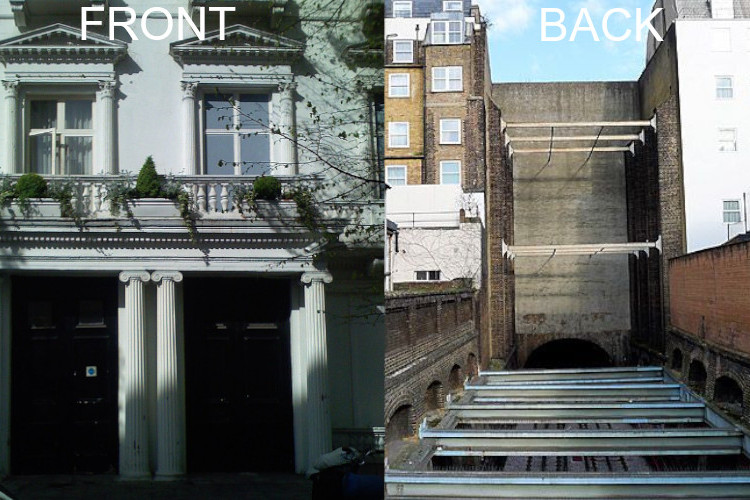
If you took a stroll along Leinster Gardens, a street in upmarket Bayswater, you would be able to admire some beautiful mid-Victorian terraced houses with Corinthian columns and balustraded balconies. Two of these beautiful houses, however, are only illusions.
Numbers 23-24 Leinster Gardens are facades purposefully built to match their 1850s terraced neighbours, but they have no rooms or any inhabitants. These 1.5m (5 ft) thick frontages, with grey-painted windows and fake doors, were built to hide a rather unsightly ground-level opening of rail line. You see, back then the Metropolitan Railway’s underground lines had steam locomotives, and this section of uncovered tracks was essential to vent off smoke.
The facades have become popular with pranksters who send pizza deliveries to these uninhabited addresses, and have even been featured on the BBC TV series Sherlock.
6. London suffered an event dubbed “The Great Stink”
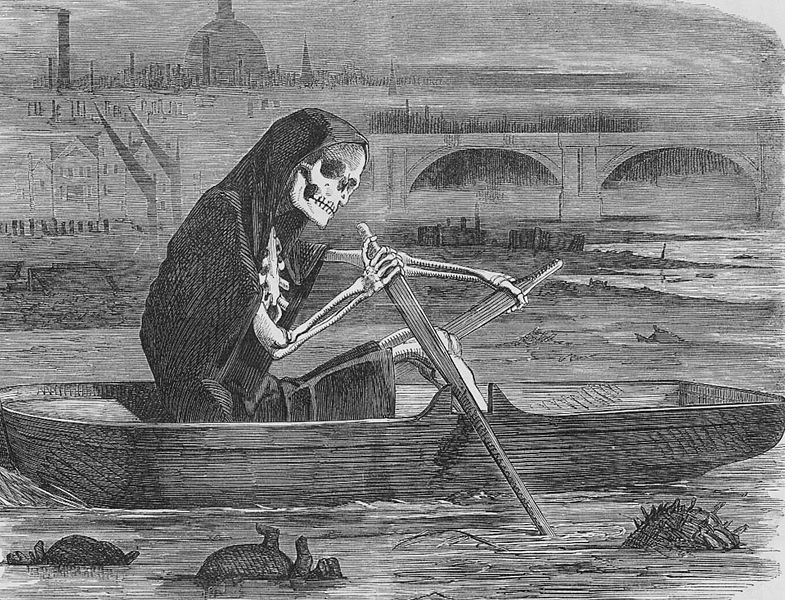
It was the summer of 1858. Driven by immigration during the Industrial Revolution, London had rapidly become the largest city in the world, flailing to support a population of almost 3 million people (a figure which had more than doubled from just 25 years prior). The city was plagued by poverty, crime and disease; with three major cholera outbreaks in the preceding decades having claimed more than 30 000 lives. The source: the Thames. Decades of human, animal and industrial waste was simply channeled into the Thames through ageing and inadequate sewer systems, and by then the problem had become so unbearable that even the curtains in Parliament had to be covered with lime to mask the horrendous odour.
In July and August of 1858, hot weather exacerbated the problem to the point where it became unbearable enough for local and national administrators to finally resort to a solution. They accepted a proposal from a civil engineer named Joseph Bazalgette, whose new interconnecting sewer system would channel all sewage towards outfalls well outside the metropolitan area. Bazalgette’s sewer system was a success and is actually still operational today. He is credited by historians as a hero of the city whose work saved more lives than any other official in London in the 19th century.
7. There is a street in London that requires drivers to drive on the wrong side of the road
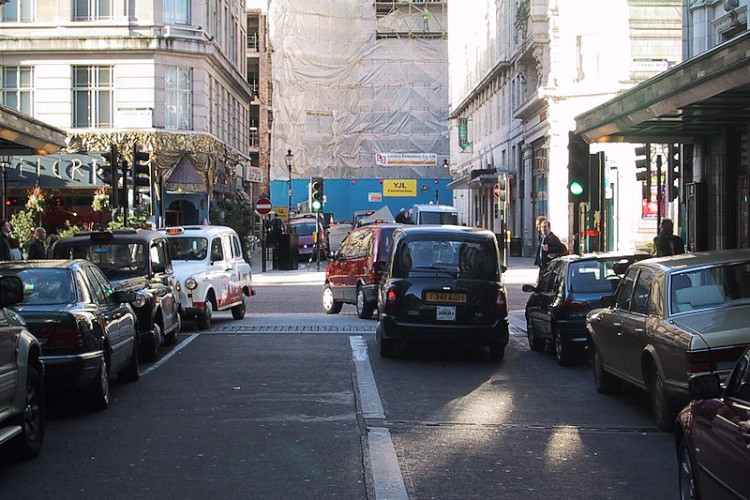
Savoy Court is a small road that leads to the famous Savoy Hotel, just off The Strand. In this small road, cars are required to drive on the right – not on the left, as is custom in the rest of London and the UK.
Apparently this odd traffic anomaly started over 100 years ago when horse-drawn carriages would deliver posh guests to the swanky hotel. Ladies and dignitaries would normally sit on the the right-hand side of the carriage, behind the driver. Approaching the hotel from the right-hand side of the road made it easier for the driver or a hotel doorman to open the carriage door without having to walk around, also allowing the elegant passengers to step directly onto the entrance of the hotel. The rule was kept in modern times for the same reason, and so that drivers dropping people off at the Savoy Theatre can quickly exchange their fares and pick up new ones without blocking the entrance to the hotel.
8. London’s black cab drivers don’t use GPS
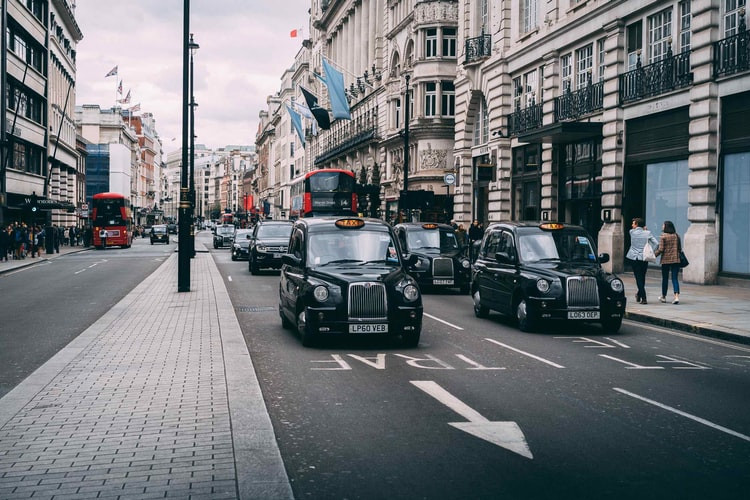
While most taxi drivers around the world just need a license and a registration permit to operate; London’s famous black cab drivers don’t have it that easy. Before being allowed to operate they have to pass a rigorous test called “The Knowledge”, which forces them to memorise 25 000 streets and 50 000 points of interest. It can take anywhere from two to ten years to complete, depending on how committed the prospective driver is, and the drop-out rate is close to 70%.
Surprisingly, black cab drivers were pitted against GPS in numerous different tests; and in every single case the drivers, with their intimate knowledge of London, reached their destinations first.
9. It’s possible to tell when the King is at Buckingham Palace
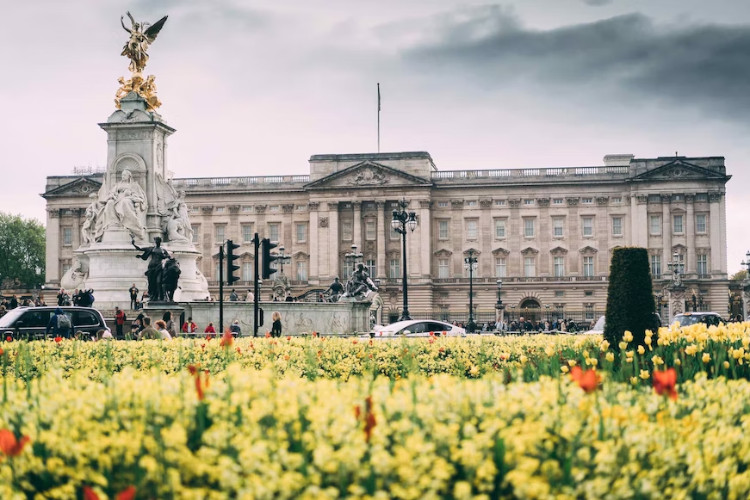
Needless to say, although Buckingham Palace is the official London residence and administrative headquarters of the British Monarch, King Charles III does not spend all of his time here. It’s easy to tell when he is in, though – just look at the flag flying over the palace.
When the King is in residence, the flag flown will be the Royal Standard (the flag exclusively used by the British Monarch in his/her capacity as Sovereign). If he is not there, the Union Flag (aka Union Jack) will be flown.
10. London Bridge is not that ornate bridge with the towers
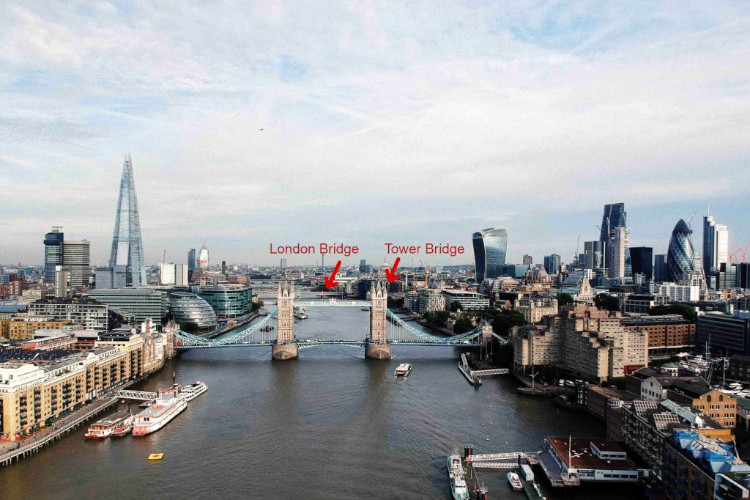
Thanks in no small part to incorrect depictions in nursery rhymes, many people confuse Tower Bridge – the pretty bridge with towers that features in all the travel brochures – with London Bridge. In reality, London Bridge is just a normal bridge, the next one upstream from Tower Bridge. There have been many bridges called “London Bridge” in the city’s past, but the current iteration was opened in 1973.
In case you were wondering, it is believed the famous nursery rhyme references Old London Bridge, which stood from 1209 to 1831 and was eventually demolished to build a new London Bridge. Despite many structural issues, however, it never fell down on its own. Interestingly, it’s replacement bridge – which spanned the Thames until 1968 – was purchased by an American entrepreneur who had it reconstructed in Lake Havasu City, Arizona; where today it spans a canal of the Colorado River.
11. Six London Underground stations are named after pubs
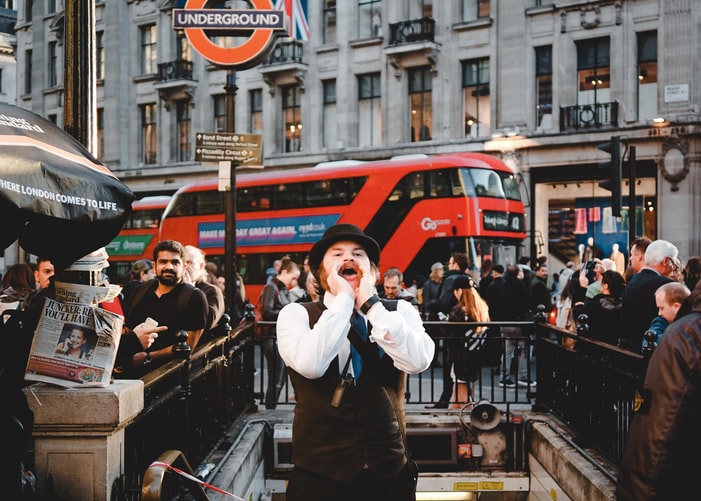
One can hardly think of London without thinking of the quintessential pub, and in a city this old it is not uncommon for some establishments to date back centuries. As the city grew, some areas took their names from the newly incorporated locals’ favourite watering holes, or vice versa. Whichever the case, when the London Underground was built, the stations took their names from the areas in which they were situated – leading to six of these inadvertently being named after pubs and inns.
The stations are Swiss Cottage, Maida Vale, Angel, Manor House, Royal Oak, and Elephant and Castle.
How many of these facts did you know or find out for the first time? Leave a comment or share with your friends to test their general knowledge of London.

Leave a Reply